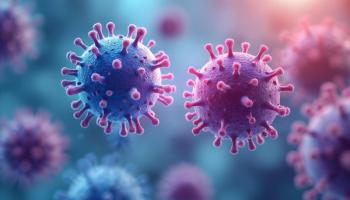
Global Cancer Care Should be Accelerated, Prioritized According to New WHO Report
Not only is cancer control a matter of public health, but its value should be viewed as an investment with considerable human and economic returns, according to a newly released report from the World Health Organization (WHO). Furthermore, although disparities between cancer care in lower- and higher-income countries may seem overwhelming, the report emphasized that they are entirely solvable with effective national cancer control plans.
Not only is cancer control a matter of public health, but its value should be viewed as an investment with considerable human and economic returns, according to a newly released report from the World Health Organization (WHO). Furthermore, although disparities between cancer care in lower- and higher-income countries may seem overwhelming, the report emphasized that they are entirely solvable with effective national cancer control plans.
The burden of cancer is increasing globally, with 18.1 million people diagnosed in 2018. By 2040, those numbers will nearly double, with the greatest increase in lower middle-income countries (LMICs), in which more than two-thirds of the world's cancers will occur, according to the report.1
Many LMICs have been forced to focus their limited resources on controlling infectious diseases, leaving cancer control on the back burner.1 In 2019, according to a WHO press release, more than 90% of high-income countries reported having comprehensive cancer treatment services available in the public health system, compared with less than 15% of low-income countries.2 Addressing these disparities is a key goal of the WHO's new report.
"This is a wake-up call to all of us to tackle the unacceptable inequalities between cancer services in rich and poor countries," said Assistant Director-General of Universal Health Coverage/Communicable and Noncommunicable Diseases for WHO Ren Minghui, MS, PhD, in a press release.2
Effective prevention, management, and treatment are keys for any country, according to the report. For lower middle-income countries looking to solve disparities in cancer care, implementing national cancer control plans and working with a variety of stakeholders is vital, according to the report.1
Prevention, Management, and Treatment
Although not all cancers can be prevented, efforts around prevention should still play an important role in any cancer control plan. Globally, approximately one-third to one-half of all cancers could be prevented with current knowledge and technology, according to the report.1
Following prevention efforts, the report includes 2 approaches for early cancer identification: early diagnosis for symptomatic disease and screening of asymptomatic individuals in a target population.1 Early diagnosis programs must be the priority, including raising awareness about symptoms, ensuring the capacity for rapid clinical and pathological diagnosis, and improving timely referrals to sites with effective treatment.1
Perhaps the most obvious key part of a cancer control plan, management efforts, including diagnostic and therapeutic approaches, should be administered by a multidisciplinary team, which the report called the “cornerstone of integrated, patient-centered care.”1
The report includes palliative and survivorship care in its discussion of management efforts. Although access to pain solutions is largely unavailable in many regions of the world, the report noted that some countries have successfully overcome political and regulatory barriers, proving that it’s possible to provide adequate palliative care despite challenges. Similarly, with more than 50 million cancer survivors globally, providing access to ongoing treatments, health needs, and support is important to bolster their re-integration into society.1
“If people have access to primary care and referral systems, then cancer can be detected early, treated effectively, and cured,” said Minghui in a statement. “Cancer should not be a death sentence for anyone, anywhere.”2
National Cancer Planning and Financing
While all countries should have a comprehensive cancer control plan, implementing such a plan is especially important for low- and middle-income countries looking to erase disparities in cancer care services.
In addition to prevention, management, and treatment, which should also be included in any national cancer plan, the report emphasized the importance of strengthening information and data-gathering systems. These systems are vital to studying disease burden, the prevalence of risk factors, and current capacity and system performance. Without this research, the report noted, it’s impossible to implement effective changes where they’re most needed.1
The financial piece of the puzzle is also necessary and although it may be the most challenging, it is far from impossible, the authors said. To save over 7 million lives by 2030, the total required investment is US $2.70 per person in lower-income countries; US $3.95 per person in lower middle-income countries; and US $8.15 per person in upper- to middle-income countries by 2030.1 Identifying feasible priorities that are evidence-based and can be financed is a key part of investing in cancer control plans.
With all of these various priorities, working with researchers, medical professionals, government systems, and patients is necessary to ensure comprehensive cancer care and an effective control plan.
“If one link in the chain is missing, the patient suffers, and resources are wasted,” the authors said in the report.1
With this in mind, the final key recommendation in the report is to engage communities and civil society to achieve cancer control. Building awareness and education is vital to implementing a national cancer control plan and cannot be done without the full participation of broader communities.1
“The past 50 years have seen tremendous advances in research on cancer prevention and treatment,” said Elisabete Weiderpass, MD, MSc, PhD, director of the International Agency for Research on Cancer, in a statement. She noted that although deaths from cancer have been reduced and important steps have been taken, those improvements are not universal.2
“We need to see everyone benefitting equally,” Weiderpass said in the statement.2
REFERENCES
- WHO Report on Cancer: Setting Priorities, Investing Wisely, and Providing Care for All. World Health Organization; Feb 3, 2020. who.int/publications-detail/who-report-on-cancer-setting-priorities-investing-wisely-and-providing-care-for-all. Accessed Feb 4, 2020.
- WHO outlines steps to save 7 million lives from cancer [news release]. Feb 4, 2020; World Health Organization website. who.int/news-room/detail/04-02-2020-who-outlines-steps-to-save-7-million-lives-from-cancer. Accessed Feb 4, 2020.
Newsletter
Stay informed on drug updates, treatment guidelines, and pharmacy practice trends—subscribe to Pharmacy Times for weekly clinical insights.


















































































































































































































